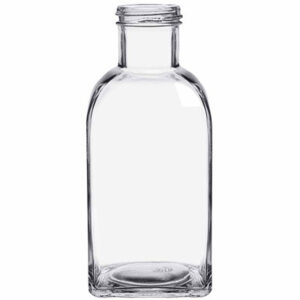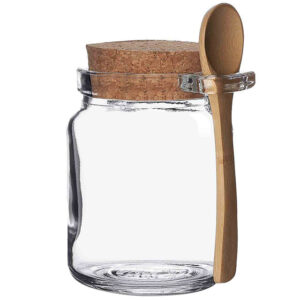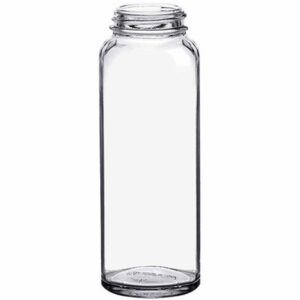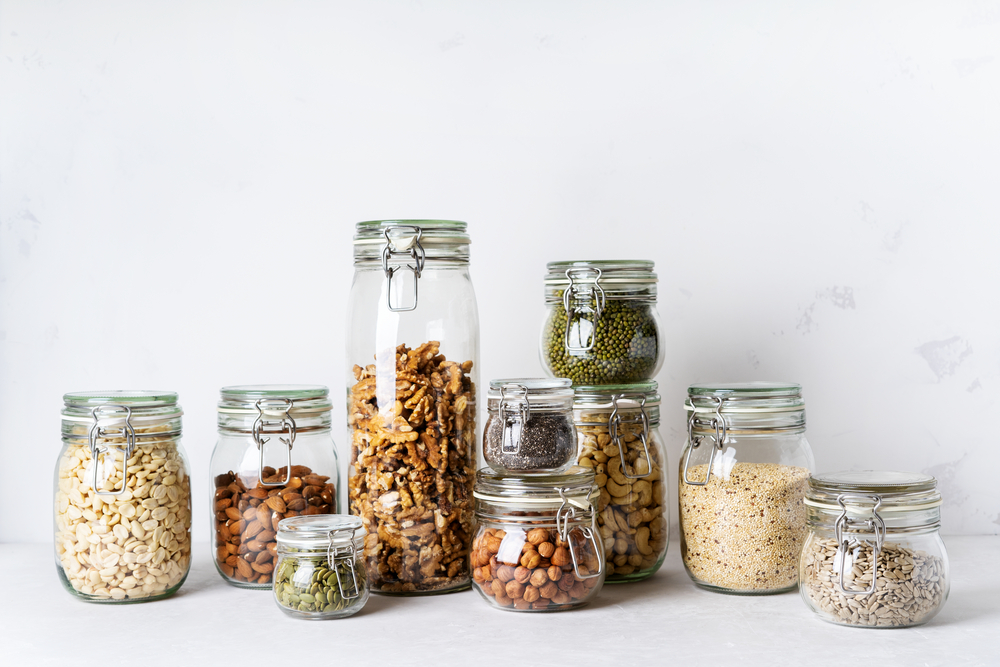In today’s competitive market, pantry food brands have plenty of available packaging options. However, when it comes to selecting the ideal packaging material for food products, glass stands out as the top choice. Keep reading as we cover 5 key benefits of using glass to package your brand’s food products.
1. Glass Packaging Preserves Food Quality
Glass is a robust and reliable packaging material, providing a superior level of protection against air and moisture. As a dependable barrier, glass packaging effectively preserves the freshness and quality of the food it contains, allowing consumers to enjoy the product at its best for a longer duration.
Furthermore, unlike alternative packaging materials such as plastic or metal, glass is inert. Because of this, glass does not react chemically with food nor contaminate it. This unique property ensures that the original taste, smell, and nutritional value of the foods remain intact.
In addition to maximizing the shelf life of food products, the strong barrier of glass prevents cross-contamination of smells and flavors between different products. This property is especially beneficial to foods with distinct flavors or aromas. With glass packaging, you can be confident that the enticing flavors and aroma of your brand’s food products will remain uncompromised from production to consumption.
2. Glass Elevates the Product’s Appearance
When it comes to visual appeal, glass packaging far surpasses materials like plastic or tin cans. The elegant and sophisticated appearance of glass exudes a sense of luxury and craftsmanship that immediately captures customers’ attention. Customers associate glass with high-quality products, and this association significantly enhances a brand’s image and customer perception.
The transparency of glass is a key factor in its visual appeal. Glass containers allow customers to easily see the food product inside, showcasing all of its vibrant colors and textures. Thus, customers make a visual connection with the product; this connection entices them to explore further and envision how the product will enhance their culinary creations.
Moreover, the clarity of glass provides a sense of trust and transparency for customers. Being able to see the product inside the package instills confidence, as customers visually assess the quality, consistency, and freshness of the food. This transparency fosters a stronger connection between the pantry product and the consumer, thereby enhancing the overall purchasing experience.
3. Glass is Durable
Glass is renowned for its durability. With proper care, glass containers outlast plastic containers in the kitchen. Unlike plastic, which melts and becomes discolored over time, glass offers a long-lasting solution for food storage. Whether it’s enduring high temperatures or going through rigorous cleaning routines, glass containers remain resilient. Additionally, glass containers do not discolor or absorb odors from food, thus maintaining their pristine appearance while keeping flavors pure.
The durability of glass ensures that food products are stored in a safe and secure environment, minimizing the risk of leakage, contamination, or damage. This resilience instills confidence in customers, assuring them that their pantry purchases are well-protected.
4. Glass is Versatile

Glass packaging is highly versatile and suitable for a wide variety of food products. Its adaptability, combined with the availability of bottles and jars in many shapes and sizes, allows glass packaging to cater to the diverse needs of different foods. Whether it’s jams, sauces, pickles, spices, or pantry snacks, glass packaging is the top choice in plenty of industries.
As you decide on glass packaging for your brand, consider the needs of your specific food product. For example, many cooking oil brands opt for tall, thin glass bottles that allow customers easy pouring. Alternatively, wide-mouth glass jars are ideal for jams and spreads, as the customer can more easily scoop out of the container.
5. Glass Packaging is Sustainable
In the face of growing concerns about packaging pollution and environmental impact, glass offers a sustainable solution. Glass is infinitely recyclable, meaning it may be recycled endlessly without losing its quality. Additionally, the recycling process for glass requires less energy compared to producing new glass, further reducing the carbon footprint.
Choosing glass packaging over other materials helps reduce waste and minimize the consumption of natural resources. By opting for glass packaging, your brand will position itself closer to environmental support, thus reaching more customers in the growing eco-friendly market.
The Best Glass Jars and Bottles for Food Packaging
Among glass jars and bottles for food packaging, there are plenty of high-quality options. Refer to the table below to find some of the best glass packaging for pantry products:
| NAME | CAPACITY | IMAGE |
| Apothecary Glass Bottle | 4 oz. |  |
| Wide Mouth Roma Glass Bottle | 16 oz. |  |
| Glass Jar With Cork And Spoon | 8.5 oz. |  |
| Apothecary Glass Wide Mouth Jar | 9 oz. |  |
Conclusion
Among food packaging materials, glass has proven itself as the premium option. Because of glass’ visual appeal, sustainability, and exceptional functionality, pantry food and ingredient brands trust glass packaging to house their best products.
For more packaging insight that will boost your pantry business, read Glassnow’s top 10 list of packaging design trends in 2023.

